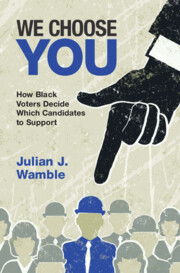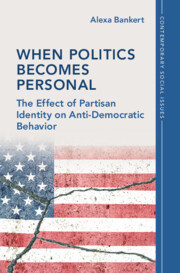Refine search
Actions for selected content:
139 results
Beyond NIMBY-ism: rethinking acceptance of housing densification in a direct democratic renters society
-
- Journal:
- Journal of Public Policy , First View
- Published online by Cambridge University Press:
- 12 November 2025, pp. 1-29
-
- Article
-
- You have access
- Open access
- HTML
- Export citation
Regional Labor Markets, Residential Mobility, and Anti-Immigration Sentiment
-
- Journal:
- British Journal of Political Science / Volume 55 / 2025
- Published online by Cambridge University Press:
- 10 November 2025, e157
-
- Article
-
- You have access
- Open access
- HTML
- Export citation
Seeking Opportunity in the Knowledge Economy: Moving Places, Moving Politics?
-
- Journal:
- British Journal of Political Science / Volume 55 / 2025
- Published online by Cambridge University Press:
- 30 October 2025, e141
-
- Article
-
- You have access
- Open access
- HTML
- Export citation
Participation and Competition in Top-Two Elections: Trade-Offs in Election Reform
-
- Journal:
- State Politics & Policy Quarterly ,
- Published online by Cambridge University Press:
- 20 October 2025, pp. 1-13
-
- Article
-
- You have access
- Open access
- HTML
- Export citation
Reconciling Theories and Patterns in Black-White Voter Turnout Through a Mini Meta-Analysis
-
- Journal:
- Journal of Race, Ethnicity and Politics , First View
- Published online by Cambridge University Press:
- 16 October 2025, pp. 1-16
-
- Article
-
- You have access
- Open access
- HTML
- Export citation
The Electoral Implications of Legislative Candidate Selection Democratization
-
- Journal:
- British Journal of Political Science / Volume 55 / 2025
- Published online by Cambridge University Press:
- 15 October 2025, e125
-
- Article
-
- You have access
- Open access
- HTML
- Export citation
Inflation and Incumbent Support: Experimental Evidence from the 2024 US Presidential Election
-
- Journal:
- British Journal of Political Science / Volume 55 / 2025
- Published online by Cambridge University Press:
- 13 October 2025, e127
-
- Article
-
- You have access
- Open access
- HTML
- Export citation
God’s country: perceptions of religious and place-based candidate identities
-
- Journal:
- Politics and Religion , First View
- Published online by Cambridge University Press:
- 20 August 2025, pp. 1-22
-
- Article
-
- You have access
- Open access
- HTML
- Export citation

Voters' Perceptions of Party Brands
-
- Published online:
- 15 August 2025
- Print publication:
- 04 September 2025
-
- Element
- Export citation
Can Politicians Say That? What Shapes Public Responses to Speech Scandals
-
- Journal:
- Journal of Experimental Political Science , First View
- Published online by Cambridge University Press:
- 08 August 2025, pp. 1-17
-
- Article
-
- You have access
- Open access
- HTML
- Export citation
Visibility of autocratization and election outcomes
-
- Journal:
- European Political Science Review / Volume 17 / Issue 4 / November 2025
- Published online by Cambridge University Press:
- 11 June 2025, pp. 691-710
-
- Article
-
- You have access
- Open access
- HTML
- Export citation
Attention and Political Choice: A Foundation for Eye Tracking in Political Science
-
- Journal:
- Political Analysis / Volume 33 / Issue 4 / October 2025
- Published online by Cambridge University Press:
- 22 April 2025, pp. 298-314
-
- Article
-
- You have access
- Open access
- HTML
- Export citation

We Choose You
- How Black Voters Decide Which Candidates to Support
-
- Published online:
- 06 February 2025
- Print publication:
- 13 February 2025
Indigenous Diffuse Support and Descriptive Representation in the Canadian House of Commons
-
- Journal:
- Journal of Race, Ethnicity and Politics / Volume 9 / Issue 3 / November 2024
- Published online by Cambridge University Press:
- 25 October 2024, pp. 512-538
-
- Article
-
- You have access
- Open access
- HTML
- Export citation
Political responsiveness and centralized religious leaders: lessons from the Catholic Church
-
- Journal:
- Politics and Religion / Volume 17 / Issue 2 / June 2024
- Published online by Cambridge University Press:
- 27 May 2024, pp. 250-275
-
- Article
-
- You have access
- Open access
- HTML
- Export citation
Why do majoritarian systems benefit the right? Income groups and vote choice across different electoral systems
-
- Journal:
- Political Science Research and Methods / Volume 12 / Issue 4 / October 2024
- Published online by Cambridge University Press:
- 21 May 2024, pp. 857-869
-
- Article
- Export citation
Political contributions by American inventors: evidence from 30,000 cases
-
- Journal:
- Business and Politics / Volume 26 / Issue 1 / March 2024
- Published online by Cambridge University Press:
- 04 March 2024, pp. 64-101
-
- Article
-
- You have access
- Open access
- HTML
- Export citation
3 - Partisan Identity and Political Behavior
-
- Book:
- When Politics Becomes Personal
- Published online:
- 04 January 2024
- Print publication:
- 18 January 2024, pp 21-33
-
- Chapter
- Export citation
Black Millennials, Slipping Alliances, and the Democratic Party
-
- Journal:
- Journal of Race, Ethnicity and Politics / Volume 9 / Issue 2 / July 2024
- Published online by Cambridge University Press:
- 11 January 2024, pp. 211-234
-
- Article
-
- You have access
- Open access
- HTML
- Export citation

When Politics Becomes Personal
- The Effect of Partisan Identity on Anti-Democratic Behavior
-
- Published online:
- 04 January 2024
- Print publication:
- 18 January 2024
